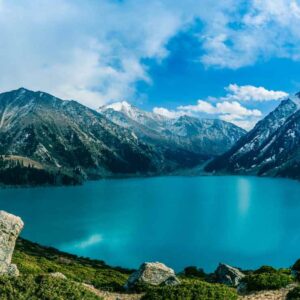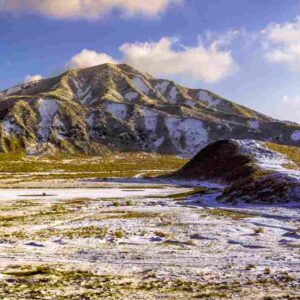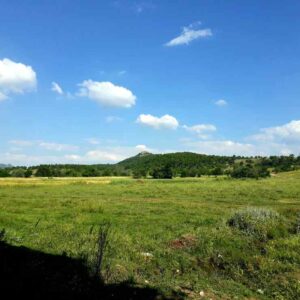what is the lithosphere consists of?
How is the surface of the Earth?
Is it flat, rough or rugged?
What are the major landforms of the Earth?
Stay calm and we will cover all about the land surface on our earth.
What are landforms?
As anyone might guess, Earth’s surface is not the same in all places. The different physical features of our Earth’s surface are termed Landforms. The Earth has several different landforms but there are three major landforms of Earth. These are:
- Mountains
- Plains
- Plateaus
One main thing about these landforms is that they are formed over a long period. They may take hundreds or thousands for their formations or to notice any changes in them. Natural processes such as soil erosion, weathering, water flow, elevation and many others help in shaping these landforms over the years.
Two major processes help in the shaping and formation of these landforms. They are:
1. Internal processes
Going by their name, these are the process occurring inside the Earth. Plate tectonics and volcanoes are some internal processes. Primarily, they take place due to the immense amount of heat in the Earth which causes the mantle layer to move. This results in the movement of the surface which causes sinking or uplifting of it.
2. External processes
These are the processes because of external events such as wind, water and soil. This leads to soil erosion and further deposition which changes the Earth surface and cause continuous wear and building of it. Erosion is the wearing down of the surface while deposition is the process of rebuilding the surface.
So, now let’s move onto the major landforms of Earth and know more about them.
Mountains – The Highs

Any natural elevation on the surface of Earth is a Mountain. They have a broad base and a small top. It is higher than its surrounding area and some might even be higher than the clouds. Mountains are formed when the tectonic plates strike each other and push the Earth surface upwards, leading to the formation of elevated surfaces called Mountains.
As we know with greater height, the temperatures decrease and it becomes cold. This makes the conditions very harsh and thus there is less life in the mountains. Life changes quickly with an increase in heights as trees become scarce and at tops, there might be only snow or ice. Colder temperatures freeze the flowing water and form Glaciers. Due to the height and climate, farming and other practices are very rare.
But that doesn’t mean, there is no life on mountains. Specific people, plants and animals who have adapted to the conditions have been living there for years. Mountains are home to some endangered species and store a variety of flora and fauna.
The highest mountain peak is Mt. Everest in Nepal with a height of 8848.86 metres. Some mountains are even under the oceans. Mauna Kea in the Pacific Ocean is a mountain under the ocean and is taller than the Mt. Everest being 10,205 metres high.
Sometimes, mountains are arranged in a line. This is called a Range of mountains. Some famous mountain ranges are the Himalayas in Asia, the Andes in South America and The Alps in Europe. Some mountain ranges may be a series of parallel ranges extending hundreds of kilometres.
There are three types of mountains:
1. Fold Mountains
Fold Mountains are created when the tectonic plates smash each other and their edges fold, due to the huge force between them. According to their ages, they are classified as young and old fold mountains.
- Young folds are aged between 10 to 25 million years such as the Himalayas and the Alps with rugged relief and high peaks.
- Old folds are older than 200 million years. The Aravalli range which has worn down due to erosion, the Appalachians and the Urals are some examples of old fold mountains.
2. Block Mountains
These are formed when large portions of land are broken and move vertically. This is caused by the tectonic plates and stress in the Earth’s crust. The uplifted parts or blocks are called horsts and the lowered blocks are grabens. The Rhine valley and the Vosges Mountains in Europe are examples of block mountains.
3. Volcanic Mountains
These mountains are formed due to volcanic activities. Magma rising to the crust leads to their formation. For examples, Mount Fuji and Kilimanjaro are volcanic mountains.
Importance of Mountains
Mountains are of huge use to humans and nature.
- They are a store of water as numerous rivers originate from glaciers.
- They are home to natural resources like petroleum, coal, timber, lac and medical herbs.
- Water from the mountains is used for agriculture purposes.
- Mountains also act as the sources for the production of hydroelectricity.
- Rivers from mountains bring with themselves fertile soil to the lower valleys which forms the fertile plains.
- They also have a rich variety of flora and fauna.
- They provide fodder, shelter, fuel and other products.
- Mountains are a major tourist attraction and are sites of scenic beauty.
- Mountains also act as natural barriers between countries.
- Several adventure sports like river rafting, skiing, hang gliding and paragliding are much popular in mountains.
Plateaus – The Table Land

An elevated flat land standing above the surrounding area is known as a Plateau. Plateaus may have one or more sides with slopes. Plateau’s heights differ vary from a few hundred metres to several thousand metres.
Plateaus may be young or old, just like mountains,. The famous Deccan Plateau of India is one of the oldest plateau. They are primarily formed by lava. The Chottanagpur Plateau is the extension of the Deccan Plateau. The East African Plateau in Tanzania, Kenya, and Uganda are the other examples of plateaus. The highest plateau in the world is the Tibet plateau with height ranging from 4000 to 6000 metres.
Significance of Plateaus
- Plateaus are very useful for the mineral reserves they have. Most of the mining sites in the world are located in plateaus. The Deccan plateau is the storehouse of minerals such as coal, iron and manganese. The African plateau is well known for its gold and diamond mining.
- Plateaus also have several waterfalls as the water from rivers fall from a great height. The Jog Falls in Karnataka and the Hundru falls in Chottanagpur plateau are examples of such waterfalls.
- The waterfalls also act as the natural sources for the production of hydel power.
- The lava plateaus are rich sources of fertile black soil and are extremely good for agriculture.
- They are sites for tourist attractions as well.
Plains – The Flats

The large flat stretches of land are Plains. Some plains may be extremely levelled while generally, they are nearly 200 metres higher than the sea level. Plains are primarily formed by the rivers flowing from the mountains.
Rivers from mountains flow down the slope and erode them. The eroded material consists of sand, silt and stones and are carried to the valleys. These deposits result in the formation of plains. Some examples of plains are the plains formed by the river Ganga and Brahmaputra in India and the Yangtze in China.
Significance of Plains
- The Plains are flat and are fertile in nature. This makes them suitable for irrigation. Therefore, they are also called ‘Food Baskets of the World’.
- The rich fertile soil has also helped the growth of industries.
- With good agriculture, other resources and industries, they are highly populated.
- The flat surface also provides easy setting up of transportation services.
- All these combining factors make plains the hub of development. The developed trade centres and ports of the world are based on plains.
How are landforms and people connected?
Human beings have a habit of adapting according to their surroundings. Because of this ability, humans have been able to live in different landforms in different ways. Life in the mountains is difficult while it is easier in the plains with much better living conditions. All the major landforms of Earth have their unique significance which can’t be ignored and thus are an important part of our life.
Some Did You Know Stuff
- Nearly 80% of the world’s population lives on Plains.
- Mountains cover 27% of the world’s land surface.
- About 12% of the world’s population live in mountainous regions but 50% of the population is somehow dependent on mountains.
So after covering everything you need to know about the major landforms of Earth, it’s time to test the knowledge gained. Below are some easy questions to test you. If you know their correct answers, do let us know by writing them in the comments sections.
